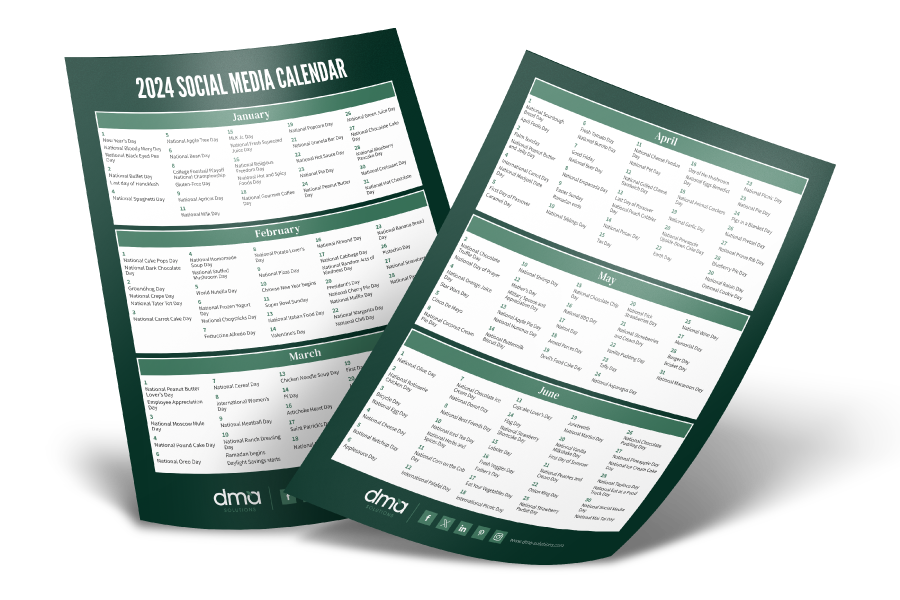We sometimes focus so much on the numbers that we forget about the need for people to hear and feel the heart in our brand voice. Some brands make the mistake of trying so hard to meet the goals of their digital communications that they end up coming across as robotic or stale. Worried this could be you?
What we know for sure is, people appreciate personality and are drawn to a voice that feels human – a brand that is more than just a brand. When you take a step back and try to define your brand’s voice, how will you approach this monumental task? Here are five things for you to consider when the time is right for you…
5 Things to Consider When Defining Your Brand Voice
Your Brand’s Persona
When defining your brand voice, start by defining the persona first. Consider who you are as a brand. What kind of voice best represents the brand that you are trying to establish or amplify?
There are many examples of both fresh produce and non fresh produce brands that showcase a variety of brand personas. Over the last few years, the social media voice portrayed representing the Wendy’s brand has caused a stir. Before you dive into this territory, be sure to do your homework and know your audience well so you know they will feel comfortable with the persona you are trying to portray to ensure that your communities stick around for awhile.
The Tone You Wish to Convey
Your brand’s persona sets the tone for the brand voice you are trying to define. You can typically use adjectives to describe tone. For example, using words like personal, humble, scientific or playful could be words to describe the tone of a brand’s voice.
Setting the tone you wish to convey also sets the stage for appropriate content for you to share, whether on social media networks, on a website or even in a tradeshow booth, for example. Determine the adjectives that best describe your brand’s tone and make sure your voice follows suit when you’re communicating to your target audiences whether internal or external.
Language To Use
Going a bit deeper now that you’ve identified your brand’s tone, consider the language that you must use to ensure your persona is getting the communication piece right. Making sure your phrasing of words line up with your tone and persona is absolutely essential. If your tone is best described as “playful”, consider how you might describe the language you should use to live up to that tone. Using words that are filled with enthusiasm and are perhaps funny could be one way to bring “playful” to life in a brand voice. On the opposite end of the spectrum, if your tone is more “serious”, perhaps more scientific language is appropriate for your audience.
Determine Your Purpose
As we continue to drill down the considerations for defining a brand voice, determining your brand’s purpose is also a fundamental element in your success. Are you trying to inform, sell or entertain? Maybe you’re trying to achieve several purposes in your communication and that is great! The most important thing to note is that your purpose should be in alignment with your persona and what they are trying to accomplish when communicating.
Being Prepared to Evolve
Don’t be afraid to change with the times. As your relationships lengthen and your brand audience grows, they’ll be more inclined to stay loyal to a brand that evolves along with them!
Another excellent example of a brand with a defined personality and voice is Starbucks. Their success and continued growth is partially due to their voice! Brands like this change with trends in food, social media, and the call of pop-culture. Of course they have the dollars to push their way across markets, but remember that they were once start-ups too, just looking for a voice and a way to grow!
If you need more inspiration, you should look at some of the brands you know and love – as you build and refine your voice don’t be afraid to look to a brand idol. You don’t need to plagiarize their art or language, but think of how they make you feel and take the time to think through how your brand can emulate that feeling.
Defining a brand’s voice should be preceded by the creation of a Messaging Guide. A messaging guide will layout in one single document who, what and why your company exists and will ultimately guide the brand’s voice. We’d like to talk to you about your messaging guide and/or brand voice needs! Reach out, connect and let’s talk about the path to better defining your brand’s voice.
{{cta(‘c51e313a-a875-4361-bbd3-bea78a505011′,’justifycenter’)}}












